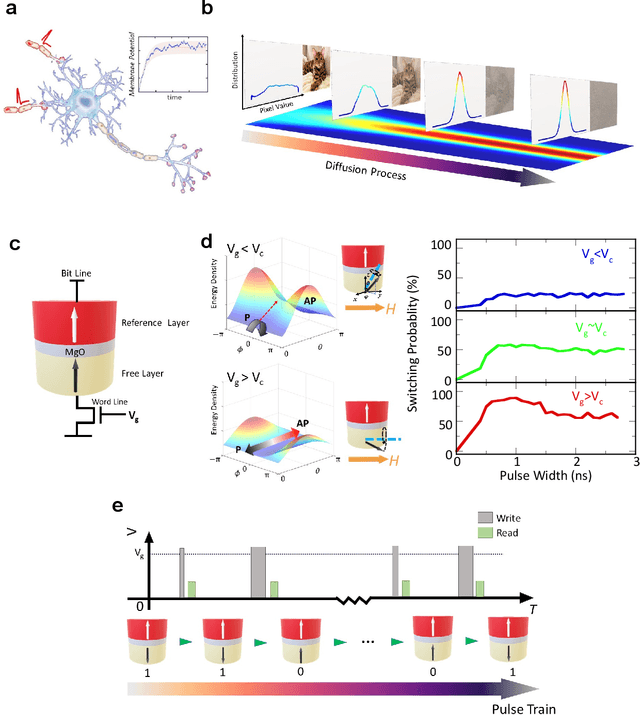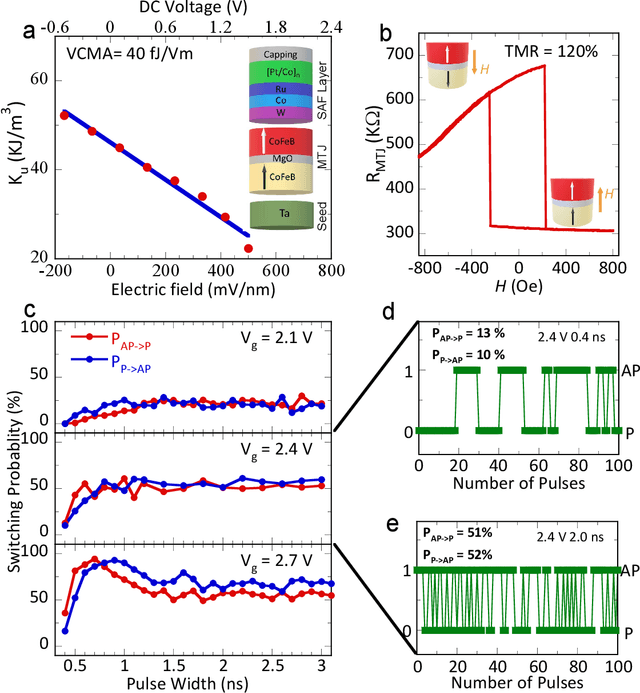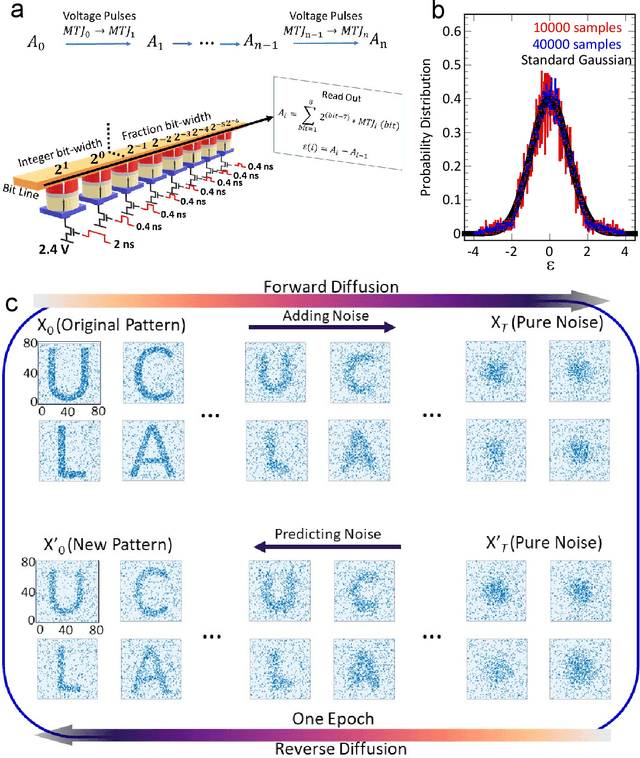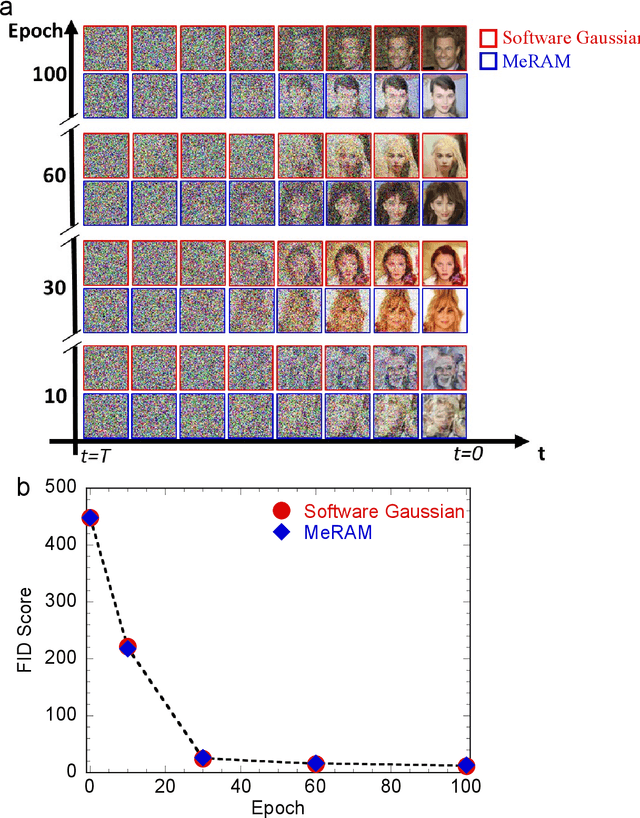Renhe Chen
Voltage-Controlled Magnetoelectric Devices for Neuromorphic Diffusion Process
Jul 17, 2024



Abstract:Stochastic diffusion processes are pervasive in nature, from the seemingly erratic Brownian motion to the complex interactions of synaptically-coupled spiking neurons. Recently, drawing inspiration from Langevin dynamics, neuromorphic diffusion models were proposed and have become one of the major breakthroughs in the field of generative artificial intelligence. Unlike discriminative models that have been well developed to tackle classification or regression tasks, diffusion models as well as other generative models such as ChatGPT aim at creating content based upon contexts learned. However, the more complex algorithms of these models result in high computational costs using today's technologies, creating a bottleneck in their efficiency, and impeding further development. Here, we develop a spintronic voltage-controlled magnetoelectric memory hardware for the neuromorphic diffusion process. The in-memory computing capability of our spintronic devices goes beyond current Von Neumann architecture, where memory and computing units are separated. Together with the non-volatility of magnetic memory, we can achieve high-speed and low-cost computing, which is desirable for the increasing scale of generative models in the current era. We experimentally demonstrate that the hardware-based true random diffusion process can be implemented for image generation and achieve comparable image quality to software-based training as measured by the Frechet inception distance (FID) score, achieving ~10^3 better energy-per-bit-per-area over traditional hardware.
A Read Margin Enhancement Circuit with Dynamic Bias Optimization for MRAM
Sep 18, 2023



Abstract:This brief introduces a read bias circuit to improve readout yield of magnetic random access memories (MRAMs). A dynamic bias optimization (DBO) circuit is proposed to enable the real-time tracking of the optimal read voltage across processvoltage-temperature (PVT) variations within an MRAM array. It optimizes read performance by adjusting the read bias voltage dynamically for maximum sensing margin. Simulation results on a 28-nm 1Mb MRAM macro show that the tracking accuracy of the proposed DBO circuit remains above 90% even when the optimal sensing voltage varies up to 50%. Such dynamic tracking strategy further results in up to two orders of magnitude reduction in the bit error rate with respect to different variations, highlighting its effectiveness in enhancing MRAM performance and reliability.
 Add to Chrome
Add to Chrome Add to Firefox
Add to Firefox Add to Edge
Add to Edge